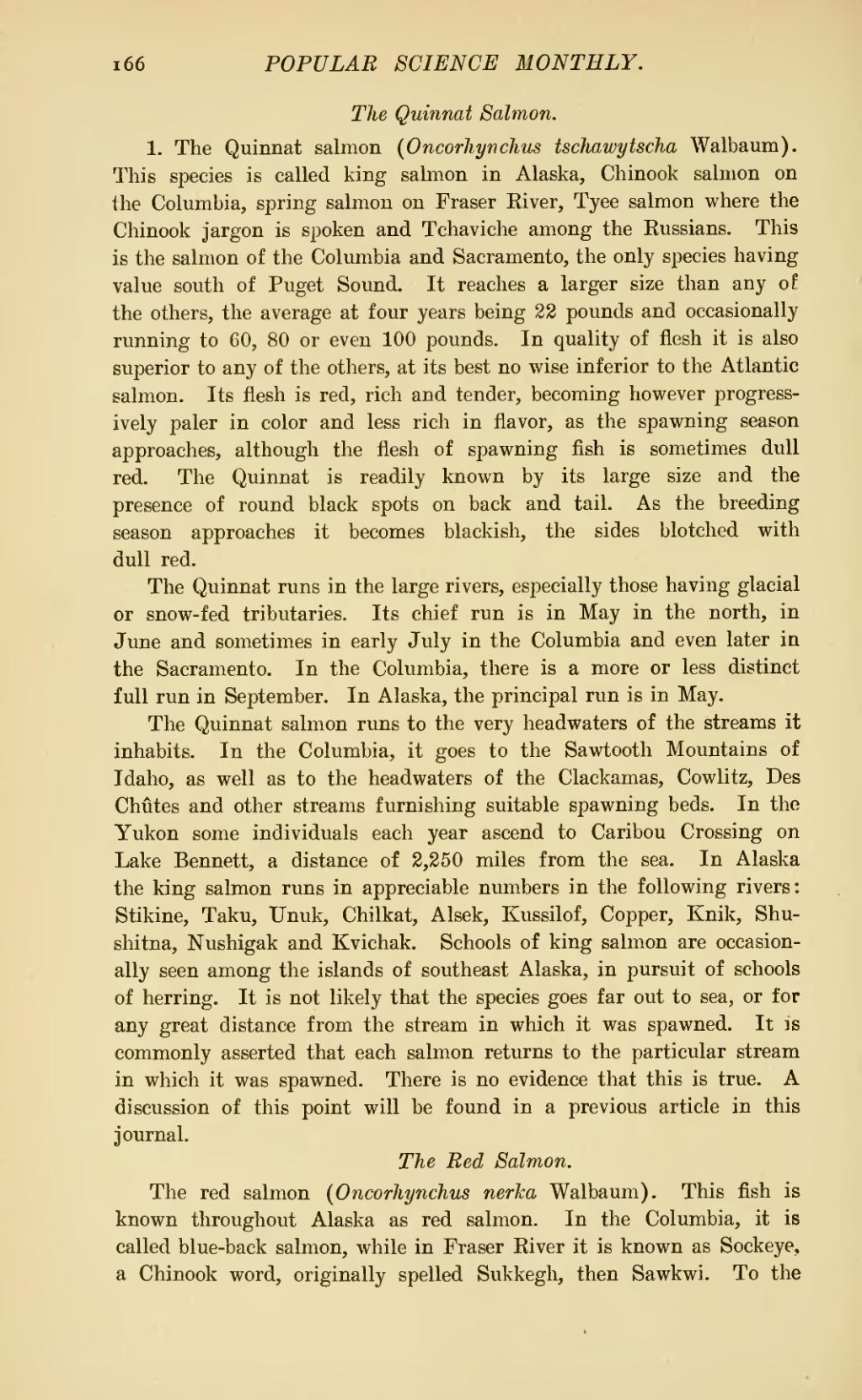The Quinnat Salmon.
1. The Quinnat salmon (Oncorhynchus tschawytscha Walbaum). This species is called king salmon in Alaska, Chinook salmon on the Columbia, spring salmon on Fraser River, Tyee salmon where the Chinook jargon is spoken and Tchaviche among the Russians. This is the salmon of the Columbia and Sacramento, the only species having value south of Puget Sound. It reaches a larger size than any of the others, the average at four years being 22 pounds and occasionally running to 60, 80 or even 100 pounds. In quality of flesh it is also superior to any of the others, at its best no wise inferior to the Atlantic salmon. Its flesh is red, rich and tender, becoming however progressively paler in color and less rich in flavor, as the spawning season approaches, although the flesh of spawning fish is sometimes dull red. The Quinnat is readily known by its large size and the presence of round black spots on back and tail. As the breeding season approaches it becomes blackish, the sides blotched with dull red.
The Quinnat runs in the large rivers, especially those having glacial or snow-fed tributaries. Its chief run is in May in the north, in June and sometimes in early July in the Columbia and even later in the Sacramento. In the Columbia, there is a more or less distinct full run in September. In Alaska, the principal run is in May.
The Quinnat salmon runs to the very headwaters of the streams it inhabits. In the Columbia, it goes to the Sawtooth Mountains of Idaho, as well as to the headwaters of the Clackamas, Cowlitz, Des Chûtes and other streams furnishing suitable spawning beds. In the Yukon some individuals each year ascend to Caribou Crossing on Lake Bennett, a distance of 2,250 miles from the sea. In Alaska the king salmon runs in appreciable numbers in the following rivers: Stikine, Taku, Unuk, Chilkat, Alsek, Kussilof, Copper, Knik, Shushitna, Nushigak and Kvichak. Schools of king salmon are occasionally seen among the islands of southeast Alaska, in pursuit of schools of herring. It is not likely that the species goes far out to sea, or for any great distance from the stream in which it was spawned. It is commonly asserted that each salmon returns to the particular stream in which it was spawned. There is no evidence that this is true. A discussion of this point will be found in a previous article in this journal.
The Red Salmon.
The red salmon (Oncorhynchus nerka Walbaum). This fish is known throughout Alaska as red salmon. In the Columbia, it is called blue-back salmon, while in Fraser River it is known as Sockeye, a Chinook word, originally spelled Sukkegh, then Sawkwi. To the

